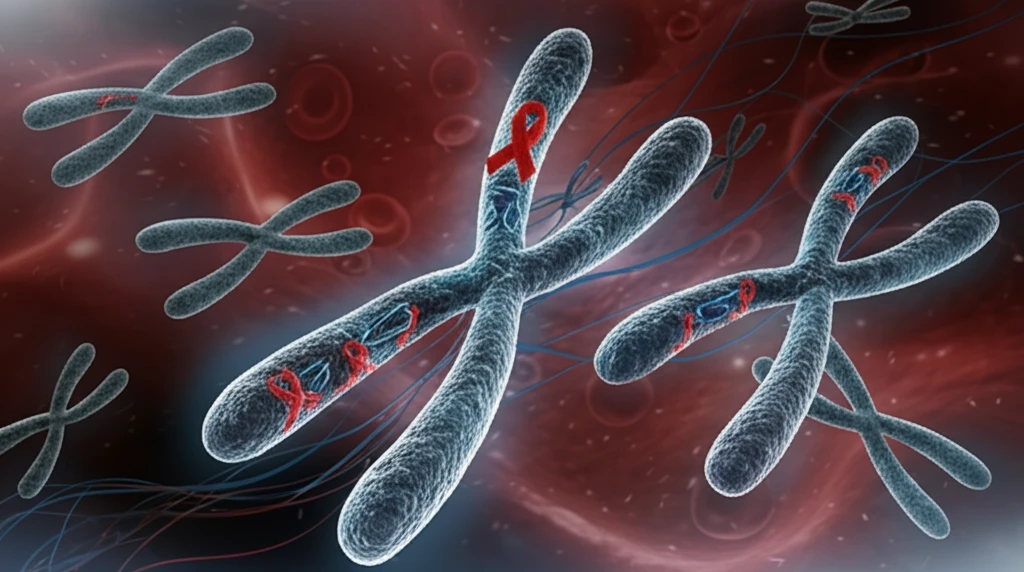
Decoding the Genetic Puzzle: How Chromosome Rearrangements Impact Blood Cancer
"Unraveling the link between t(3;8)(q26.2;q24) translocation and therapy-related myeloid neoplasms for better prognosis."
In the complex world of genetics, chromosomal rearrangements can act as significant drivers of disease, particularly in cancer. Among these, the translocation t(3;8)(q26.2;q24) stands out as a rare yet critical abnormality associated with myeloid neoplasms, a group of cancers affecting the blood and bone marrow. This translocation involves the exchange of genetic material between chromosomes 3 and 8 at specific locations, leading to the disruption and rearrangement of key genes.
A recent study has shed light on the clinical and molecular characteristics of patients with myeloid neoplasms harboring the t(3;8)(q26.2;q24) translocation. The research, which analyzed data from 20 patients, reveals a strong association between this genetic anomaly and therapy-related myeloid neoplasms (t-MN), cancers that arise as a consequence of previous chemotherapy or radiation treatments. The translocation often results in the rearrangement of the MECOM and MYC genes, both of which play crucial roles in cell growth and development.
Understanding the implications of t(3;8)(q26.2;q24) is vital for improving the diagnosis, prognosis, and treatment of affected individuals. By delving into the genetic and clinical features of this rare translocation, researchers aim to pave the way for more targeted and effective therapies, ultimately improving the outcomes for patients with these aggressive blood cancers.
Unveiling the Role of MECOM and MYC Rearrangements

The t(3;8)(q26.2;q24) translocation is particularly noteworthy due to its impact on two important genes: MECOM (MDS1 and EVI1 complex locus) and MYC. MECOM, located on chromosome 3, plays a crucial role in hematopoiesis, the formation of blood cells. MYC, situated on chromosome 8, is a well-known oncogene involved in cell growth, proliferation, and differentiation. When the translocation occurs, these genes can become dysregulated, leading to abnormal cell behavior and cancer development.
- MECOM rearrangement was detected in 95% of patients tested.
- MYC rearrangement was found in 89% of patients tested.
- Myc protein expression was consistently present in assessed cases.
Implications for Prognosis and Treatment
The study's findings have important implications for the prognosis and treatment of patients with myeloid neoplasms associated with t(3;8)(q26.2;q24). The researchers observed that patients with this translocation often have a dismal outcome, with a median overall survival of only six months. This highlights the aggressive nature of these cancers and the need for more effective treatment strategies. Understanding the molecular mechanisms underlying the pathogenesis of these neoplasms may lead to the development of targeted therapies that specifically inhibit the activity of MECOM or MYC, or that counteract the downstream effects of their dysregulation. Further research is needed to explore these possibilities and to identify novel therapeutic targets for this challenging group of blood cancers.
